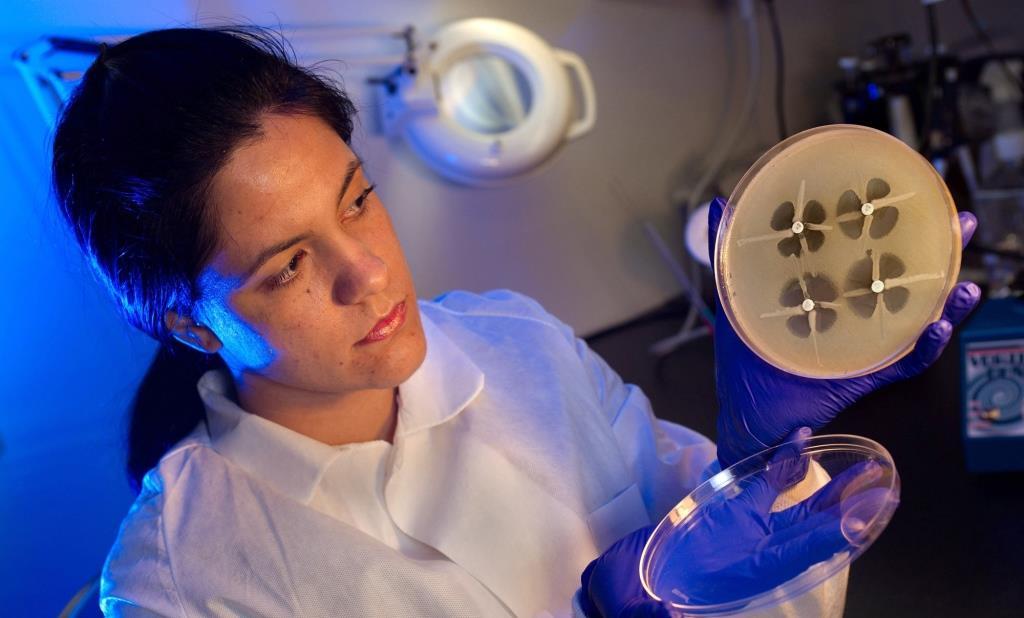In a major report today that looked at antibiotic usage, the US Centers for Disease Control and Prevention (CDC) said some clinicians in similar hospital units prescribe triple the amounts, with some making the types of errors that fuel drug-resistance problems that put many more patients at risk.
On a more hopeful note, however, the same report also found hospitals that trim their antibiotic use by 30% can reduce Clostridium difficile (C diff) infections, a potentially deadly diarrheal infection known to sicken patients in health facilities, by 26%. The CDC published the findings today in Morbidity and Mortality Weekly Report (MMWR).
As today's report focused on encouraging antibiotic stewardship in more hospitals, CDC officials received word that a proposed White House budget released today contains $30 million for such programs, an amount they said could spur solid progress in addressing the problem.
Antibiotic stewardship programs are considered a key step in reducing the threat of antibiotic resistance.
At a media telebriefing today, CDC Director Tom Frieden, MD, MPH, said the MMWR report shines a light on hospitals in which antibiotic stewardship programs can have a direct and immediate impact.
"We aren't stopping at identifying the problem; we're providing the tools. We know facilities and providers want to do a better job," he said, unveiling two new CDC resources for hospitals: a document and checklist detailing the core components of a hospital antibiotic stewardship program.
An almost 1:1 impact
CDC researchers based the findings of their report on three sources: a proprietary hospital drug database that allowed them to analyze antibiotic prescribing patterns at 323 hospitals in 2010, daily snapshots of antibiotics given to patients in 2011 at hospitals in the CDC's Emerging Infections Program (EIP), and 2012 and 2013 data on antibiotic use from 26 medical-surgical wards that reported to the National Healthcare Safety Network (NHSN), a healthcare-associated infection (HAI) tracking system.
Besides looking at antibiotic prescribing patterns, the team also analyzed the EIP data to identify opportunities to improve prescribing for selected urinary tract infections (UTIs) and intravenous vancomycin. And finally, they developed a model that allowed them to use their observations to see if changes in antibiotic prescribing patterns were likely to alter the number of C diff infections.
They found that clinicians in some hospitals prescribed three times as many antibiotics as those working in similar units at other hospitals. Also, they discovered that clinicians made potential errors in prescribing IV vancomycin and antibiotics for UTIs a third of the time. For example, some health providers gave the drugs without adequately testing or evaluating patients or prescribed them for too long.
The modeling part of the study suggested that hospitals that reduce by 30% the use of drugs known to provoke C diff infections could cut the number of those infections 26%. "That's almost a 1:1 impact," Frieden said.
Frieden and John R. Combes, MD, senior vice president of the American Hospital Association (AHA) told reporters that it's important to debunk the myth that antibiotic stewardship principles keep doctors from providing the best care to individual patients and erode their professional autonomy.
Combes said, "The right antibiotic for the right duration is in the best interest of the patient." He added that science-based best practices are best promoted in facilities by teams led by doctors. "This is not a bureaucratic obstacle to good clinical care, this is good clinical care."
Frieden added, "Public health can act as an honest broker to pull people together."
Possible $30 million boost
Regarding the proposed $30 million in federal funds to target antibiotic resistance, Frieden said the money would be available in fiscal year 2015 to support rapid antibiotic resistance detection and prevention programs.
"This is a serious problem, but it's not too late," he said, adding that the budget infusion has the potential to cut the rate of deadly C diff and Carbapenem-resistant Enterobacteriaceae (CRE) infections by half.
In statements e-mailed to reporters today, some of the top infectious disease groups weighed in on the CDC's report and the proposed funding.
The Society for Healthcare Epidemiology of America (SHEA) said the CDC report shows poor prescribing patterns in US hospitals, and it urged hospitals and health systems to step up efforts to protect patients by improving antibiotic-prescribing practices.
Sara Cosgrove, MD, MS, chair of SHEA's Antimicrobial Stewardship Taskforce and associate professor of medicine and epidemiology at Johns Hopkins University, said in the statement, "Antibiotics are a precious resource, yet for decades we have not had a systematic approach in hospitals across the US to ensure they are used wisely."
She added that the stewardship programs can enable clinicians to make good choices about antibiotics they prescribe for hospital patients.
The Infectious Diseases Society of America (IDSA) in its statement applauded the White House's budget request, which it says more than doubles funding for the CDC's efforts to battle antibiotic resistance. The society said the money would also continue funding the Advanced Molecular Detection initiative that tracks the development of antibiotic resistance in the United States, as well as the Global Health Security program that is designed to detect, prevent, and control antimicrobial resistance around the world.
"This budget request is an important step forward, and we urge Congress to fully fund it," the IDSA said.
However, it added that antibiotic resistance is complex and requires a multifaceted plan. Alongside the new CDC funding, it called on President Obama and Congress to pass legislation that would speed patient access to the must urgently needed antibiotics, provide tax credits to promote antibiotic and diagnostic research, and strengthen federal response to antimicrobial resistance.
See also:
Mar 4 CDC MMWR report
Mar 4 CDC press release
CDC core elements of hospital antibiotic stewardship programs
CDC checklist for core elements of hospital antibiotic stewardship programs

























